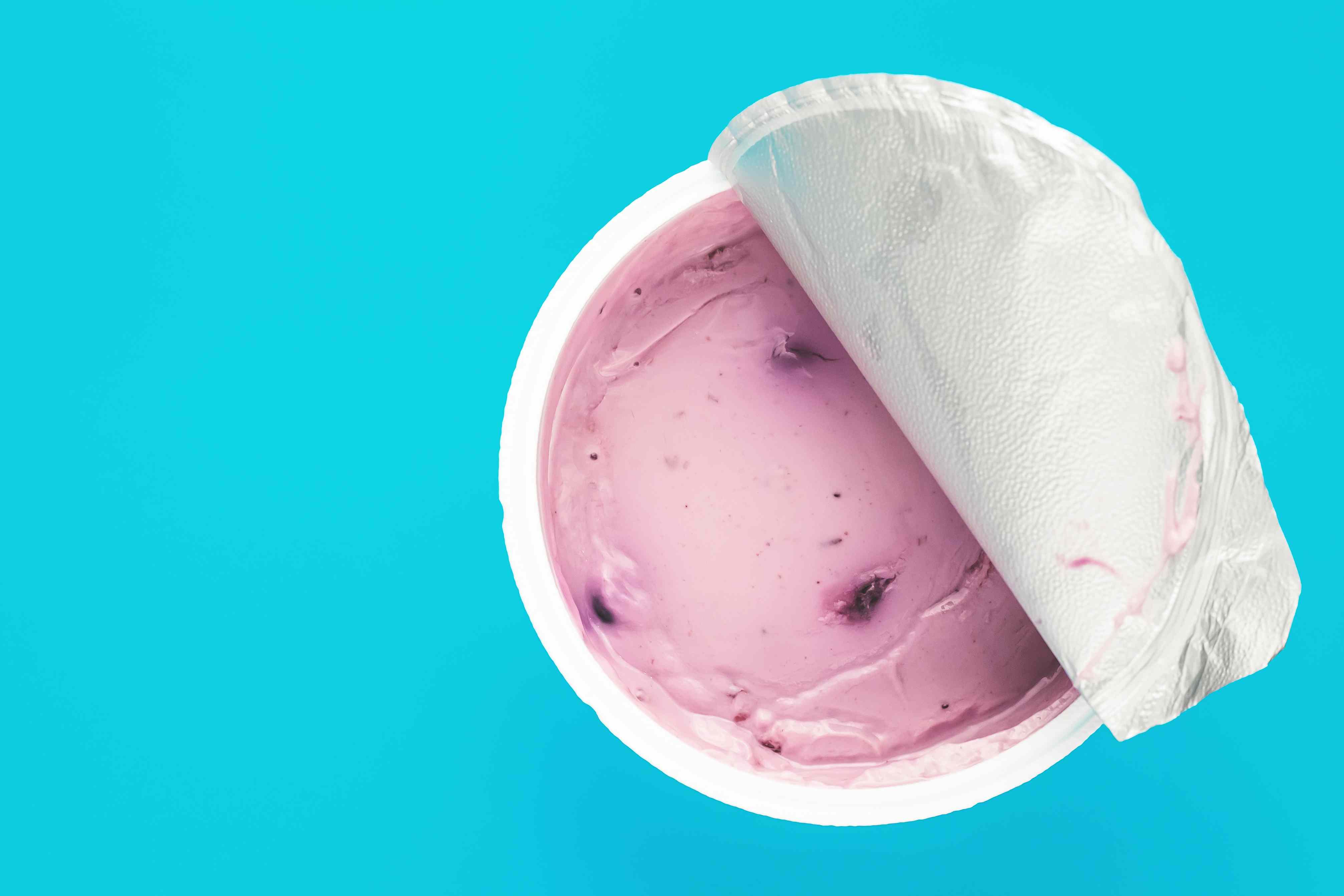Should You Pour Out the Liquid on Top of Yogurt? Dietitians Reveal the Truth Experts reveal what that liquid is—and what you should do with it

Chances are you've opened a yogurt to find a watery layer sitting on top

Tatyana Azarova / Getty Images
- That watery layer on top of yogurt is whey, a protein in milk.
- Liquid separation happens to all yogurt over time, and it’s not a sign of spoilage.
- Whey is a healthy protein packed with nutrients, so don’t pour it out—stir it back in.
You open the lid of your yogurt, expecting that creamy, luxurious texture. Instead, you’re greeted by a thin, watery layer sitting on top. Do you pour it out? Stir it in? Toss the whole thing?
Experts explain what that mysterious liquid is, and what you should do with it.
What Is That Liquid, Anyway?
The liquid on top of your yogurt is actually whey protein.
Milk contains two main types of protein: whey and casein. When milk is fermented into yogurt, the casein protein clumps up, forming the thick yogurt. Meanwhile, whey protein stays in liquid form.
Over time, that liquid rises to the top of the container because it’s less dense than the solid yogurt, Bryan Quoc Le, PhD, food scientist, consultant, and founder of Mendocino Food Consulting, told Health.
The liquid is like yogurt’s version of oil in natural peanut butter. It’s normal, and it certainly doesn’t mean your yogurt has spoiled.
Is It Healthy, Or Should I Pour It Out?
Don’t pour out that liquid—whey is healthy, and a key part of what makes yogurt such a powerhouse snack.
Whey is a complete protein, meaning it contains all nine essential amino acids that your body can’t create on its own. It’s also a great source of calcium, probiotics, and vitamins.
Whey even has some advantages over other types of protein, said Toby Amidor, MS, RD, nutrition expert and author of Health Shots. It makes you feel fuller for longer, and it’s easier for your body to digest and absorb than other proteins, including casein.
Next time you see liquid at the top of your yogurt, just stir it in and enjoy.
Does This Happen to All Yogurt?
Liquid separation can happen to all yogurt, but the amount of liquid at the top of the container depends on the type of yogurt.
Greek yogurt is strained to remove excess whey, so it tends to have less liquid separation than regular yogurt, which isn’t strained and, in turn, contains more whey.
Plant-based yogurt, made from milk alternatives like coconut or almond milk, may also have some liquid separation. That liquid isn’t whey—it’s mostly water, and it’s also safe to mix in.
How to Know If Your Yogurt’s Actually Gone Bad
While that watery layer is perfectly safe—and even healthy—there are some key signs you can look out for to tell if your yogurt has spoiled:
- Rancid smell: Fresh yogurt has a mild, tangy aroma. “If you smell an off odor, then toss it,” Amidor told Health.
- Unusual color: Yogurt should be its usual white color (or whatever color it’s supposed to be if it’s flavored). Any pink, yellow, or green hues could indicate mold or bacteria growth. And don’t just scoop out the mold. “The whole container should be discarded,” Amidor advised.
- Lumpy texture: Thick and creamy is the goal. If you notice excessive clumping, sliminess, or curdling, that’s a red flag.
- Sour favor: “Spoiled yogurt will have an extremely sour flavor. Do not swallow—toss the entire container,” Amidor said.
- Expired best-by date: Always check the date on the container. While yogurt can sometimes last a little past its best-by date if stored properly, it’s safest to toss it when it expires.
- Bloated container: “Look at the yogurt container, and if it is bloated, that could mean that it is spoiled,” Amidor said.
The Bottom Line
That watery layer on top of your yogurt is actually whey, a healthy protein packed with vitamins and minerals. Liquid separation is normal and happens to all yogurt over time. Instead of pouring it out, stir the liquid back in for the full health benefits of your yogurt.
Edited by Jenna Anderson Read more:This story originally appeared on: Health News - Author:Lauren Manaker MS, RDN, LD


















